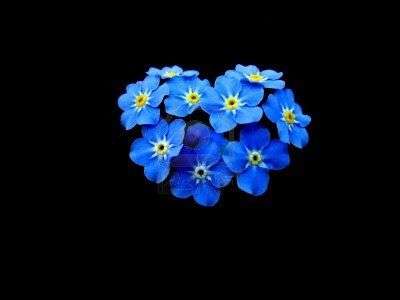| Romance Poetry posted December 2, 2022 | Chapters: |
...76 77 -78- 79... 
|
      |
4/5/4/7/7 Tanka
A chapter in the book Tanka Collection
Loving Gaea
by Gypsy Blue Rose
For Rules, Please Read My Author Notes

fingers contour
smooth mounds and valleys warm and luscious midst lavender and lemons scented breeze and autumn rain  |
The title is inspired by Gaea, the Earth Goddess, but is not necessarily what the poem is about.
TANKA is a Japanese poetic form that originated in Japan's Imperial Court, where the men and women engaged in courtship would exchange tanka after an intimate night. This poetic form was created 1,200 years ago. FORM: It's written in a concise manner of 31 syllables (5/7/5/7/7) OR LESS because Japanese and English syllables are different. Personification, metaphor, and simile are permitted in Tanka. Capitalization and punctuation should only be used when necessary and it never rhymes. click here if you want to see tanka rules - click here if you want to see modern tanka examples - click here to read Tanka Society of America
Thank you very much for taking the time to read and review my poem.
Gypsy Word Weaver
==============================================
TANKA is mostly written by women. These poetesses, among others, inspire me to write tanka poems.
Ono no Komachi ( 825 - 900) was a Japanese tanka poet, one of the six best poets of the early Heian period. She was renowned for her unusual beauty. Wikipedia
Izumi Shikibu ( born in 976 ) is a member of the Thirty-six Medieval Poetry Immortals. She "is considered the greatest woman poet of the Heian period.
Murasaki Shikibu "Lady Murasaki"; (973 - 1025) was a Japanese poet and lady-in-waiting at the Imperial court. She is widely considered to be one of the world's first novels, written in Japanese between about 1000 and 1012. Wikipedia
Yosano Akiko (1878 -1942) was a Japanese poet, pioneering feminist, pacifist, and social reformer, She is one of the most noted, and most controversial, post-classical woman poets of Japan. Wikipedia
Pays
one point
and 2 member cents. TANKA is a Japanese poetic form that originated in Japan's Imperial Court, where the men and women engaged in courtship would exchange tanka after an intimate night. This poetic form was created 1,200 years ago. FORM: It's written in a concise manner of 31 syllables (5/7/5/7/7) OR LESS because Japanese and English syllables are different. Personification, metaphor, and simile are permitted in Tanka. Capitalization and punctuation should only be used when necessary and it never rhymes. click here if you want to see tanka rules - click here if you want to see modern tanka examples - click here to read Tanka Society of America
Thank you very much for taking the time to read and review my poem.
Gypsy Word Weaver
==============================================
TANKA is mostly written by women. These poetesses, among others, inspire me to write tanka poems.
Ono no Komachi ( 825 - 900) was a Japanese tanka poet, one of the six best poets of the early Heian period. She was renowned for her unusual beauty. Wikipedia
Izumi Shikibu ( born in 976 ) is a member of the Thirty-six Medieval Poetry Immortals. She "is considered the greatest woman poet of the Heian period.
Murasaki Shikibu "Lady Murasaki"; (973 - 1025) was a Japanese poet and lady-in-waiting at the Imperial court. She is widely considered to be one of the world's first novels, written in Japanese between about 1000 and 1012. Wikipedia
Yosano Akiko (1878 -1942) was a Japanese poet, pioneering feminist, pacifist, and social reformer, She is one of the most noted, and most controversial, post-classical woman poets of Japan. Wikipedia

You need to login or register to write reviews. It's quick! We only ask four questions to new members.
© Copyright 2024. Gypsy Blue Rose All rights reserved. Registered copyright with FanStory.

Gypsy Blue Rose has granted FanStory.com, its affiliates and its syndicates non-exclusive rights to display this work.
